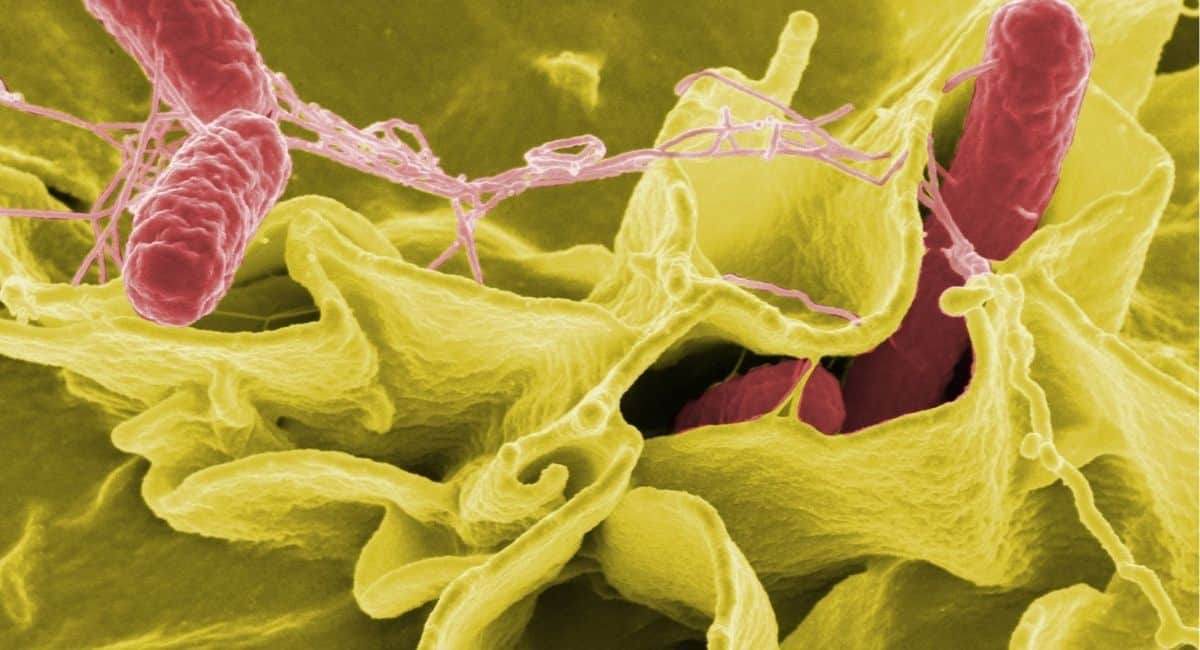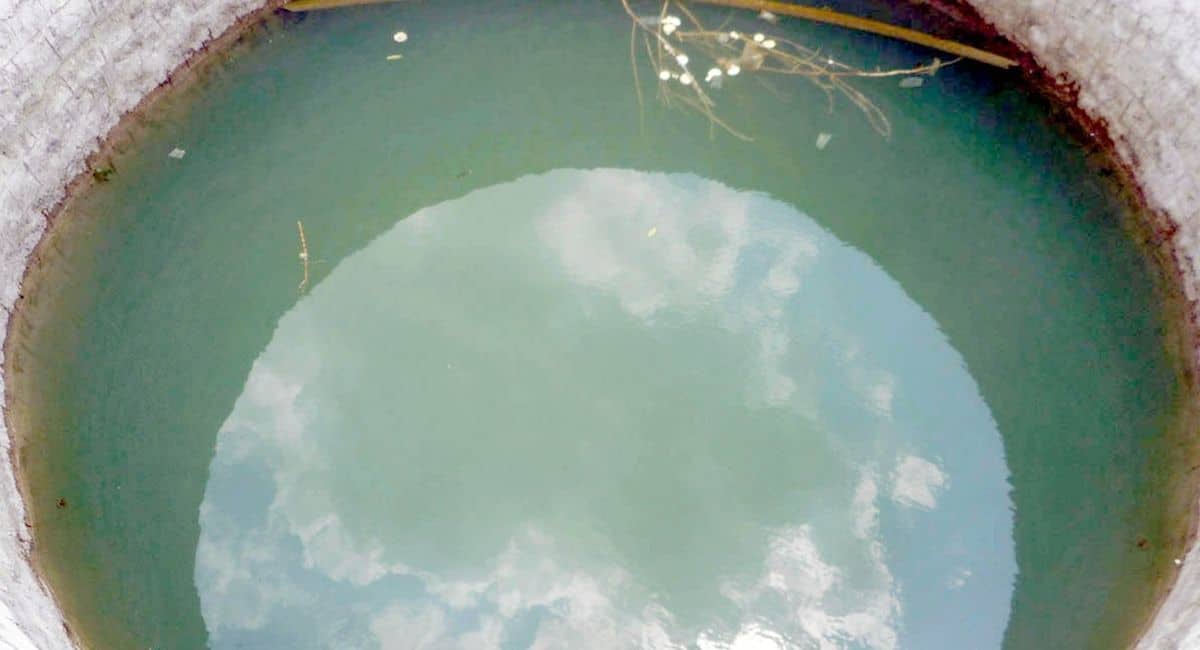We like to share product recommendations with you and hope you like them! Just to make you aware Water Filter Data may collect a small share of sales or other compensation from the links on this page.
If you belong to one of the 19 million US citizens who rely on a private water well, you know how complicated and ever-changing water can be.
It’s common for a well water test to detect the presence of coliform, particularly if you live in an older house with an underground well.
It’s important to remember that coliform isn’t always present in every water sample. If they do show up in a water supply, they might be random or even seasonal.
However, if you do find coliform bacteria, there’s no need to panic. That being said, let’s talk about coliform and the potential risks it can cause!

What are Coliform Bacteria?
Coliform bacteria can be found in the environment as well as the feces of all warm-blooded animals and humans. Their existence in drinking water shows the presence of disease-causing organisms in the water system.
The majority of germs that might contaminate water sources are found in the excrement of people or animals.
While coliforms do not generally cause serious diseases, they are easy to cultivate, and their presence indicates the presence of other pathogenic organisms of fecal origin.
Pathogens include bacteria, viruses, and protozoa that cause disease, as well as numerous multicellular parasites!
Are Coliform Bacteria Harmful?
Most coliform bacteria are not harmful. However, fecal coliforms like E.coli, might make people sick and cause symptoms like nausea, cramps, headaches, dizziness, or can even lead to kidney disease.
A positive coliform test should be taken seriously, especially if newborns, young children, the elderly, or others with impaired immune systems reside or visit the family regularly.
Sources of Coliform Bacteria in Well Water
Coliform is common in the environment, including soil and animal intestines, and are normally non-toxic.
The presence of these bacteria in well water or tap water probably means that the water is polluted with germs that can cause sickness and can even contaminate your well water without causing any change in taste or odor.
Therefore, it is recommended that household water wells get tested for coliform bacteria on an annual basis. Total coliform bacteria and E.coli bacteria are the two types of coliform bacteria found in well water.
The number of total coliform does not mean that the resource is contaminated in and of itself, but it can indicate the presence of one or more of the more dangerous forms of pathogenic bacteria, such as fecal or E. coli bacteria.
If fecal coliform or E. coli are found in well water, the priority should be to not only disinfect your water system, but to determine the source of your bacteria contamination.

Coliform Bacteria Testing
Health workers highly advise annual coliform bacteria testing for household water wells since contamination can develop without any change in the water’s flavor or odor.
Total coliform, fecal coliform, and E. Coli are the various bacterial tests. The total coliform bacteria test is the simplest basic test for microbial contamination of a water source.
Total coliform percentages provide a broad indication of a water supply’s sanitary quality. Total coliform bacteria contain bacteria found in soil, water impacted by surface water, and human or animal excrement.
Fecal coliforms are a subset of total coliforms that are thought to be found specifically in the stomach and excrement of warm-blooded animals.
Since the roots of fecal coliform are more particular than those of the more generic total coliform type of bacteria, fecal coliform is thought to be a more accurate indicator of animal or human waste than total Coliform.
Why Do We Need to Test?
The only guaranteed method to tell if your water is safe is to test it for germs. You can’t determine if the water contains disease-causing organisms by only looking at it, tasting it, or smelling it.
Well owners should test their water for coliform bacteria at least once per year, and more regularly if bacteria has been an issue in the past.
Pathogen concentrations from fecal contamination are frequently low, and the number of distinct pathogens is vast.
As a consequence, testing for pathogens in every water sample obtained is impractical. Instead, the presence of pathogens is determined by testing for an “indicator” organism such as coliform bacteria.
What Do the Results Indicate?
“My well water tested positive for coliform” Is usually a cause of concern that coliform is present in your water supply, your chances of acquiring a water-borne disease increases.
Although total coliforms might originate from sources other than feces, positive total coliform results imply the risk of contamination in your well.
Positive fecal coliform readings, particularly positive E. Coli results, should be interpreted as an indicator of fecal contamination in your well.
Removing Coliform From Water
When the test results are in, there are many options for removing and preventing the presence of coliform bacteria.
Shock Chlorination
Coliform bacteria can enter the water system as a result of a one-time or temporary contamination event, such as a strong downpour, flood, or the installation of a new filter or other underground equipment.
Shock chlorination is a method used to disinfect a well by introducing a high quantity of chlorine into the water for a brief period of time. This is essentially a one-stop-shop for coliform elimination.
Retest the water for coliform within 2 weeks and verify after 2 months to validate the efficacy of the shock chlorination. If both tests come back negative, the contamination was probably a one-time occurrence that has now been cleaned. If not, you can proceed to more stringent treatment methods.
Continuous Disinfection
A supply system delivers chlorine into the water during continuous chlorination. Chlorine might be either liquid or solid.
Although chlorine kills bacteria in water, it is also eaten by other pollutants such as iron and organic waste. The quantity of chlorine that you use should be determined by the results of testing for the presence of coliform and other contaminants.
It is critical to remember that you should not use too much chlorine since residual chlorine after disinfection can affect the flavor and color of the water. After disinfection and before drinking, it is advisable to eliminate the chlorine.
How Can You Disinfect Coliform Well Water?
Many treatment procedures can be used to disinfect well water.
Boiling Water
Bacteria are effectively killed by boiling water for around one minute. During an emergency or while camping, this procedure is widely used to purify water.
But, boiling takes a long time and uses a lot of energy, and it only produces a tiny amount of water. Therefore, this is not a long-term solution.
Ozonation
Ozonation has gained more attention over the years as a strategy for reducing water quality issues such as bacterial contaminants. Ozone, like chlorine, is a powerful oxidant that kills germs.
It is a considerably more fragile gas that must be produced on-site using electricity. Once generated, the ozone is pumped into the water, where it then removes the germs.
Iodination
In the past, iodine, like chlorine, was used to regularly disinfect water. Iodination seems to be no longer recommended as a permanent disinfection method due to medical reasons about the long-term effects of low quantities of iodine residual in the water.
The US Environmental Protection Agency currently advises iodination solely for short-term or emergency disinfection. For water treatment, iodine is a popular choice among campers and hikers.
Frequently Asked Questions
Does water with coliform have a taste?
No, well water with coliform does not have a taste. You cannot tell if your well water has harmful pathogens, so if you depend on taste alone, you’ll be at risk of health issues. Although the bacteria might not cause severe damage, you might experience some discomfort when you drink water with coliform. Similarly, it doesn’t have an odor or color.
What is the best method to remove coliform from water?
There are several methods that work effectively in removing coliform from water. It depends on what situation you’re in. For example, if you want to temporarily remove the bacteria before looking for a permanent solution, using the shock chlorination method is best.
If you want to disinfect a small quantity of water, the shock chlorination method will not work well because there would be a high chlorine concentration. Instead, you can choose to boil the water.
Can I test for coliform in my well by myself?
Yes, you can test for coliform in your well by yourself. There are low-cost kits you can buy to perform the process. DIY coliform tests are easy to do, and take around two to three days for the results to come out. Please be sure to buy a test kit from a reputable brand, so you have valid results. Also, you can retest to confirm your results. If your water tests positive, you should visit a health department lab to reconfirm. From there, you can be given steps to handle the situation.
What should I do if my well water is making me sick?
If you have health concerns after drinking your well water, you should visit the doctor. They can run a series of tests to see if a bacteria is responsible. Usually, coliform doesn’t make someone sick, but some individuals might experience abdominal pain and other symptoms. Please don’t try to treat your symptoms individually, instead visit a doctor.
Can I bathe in coliform water?
Yes, you can bathe in coliform water. Although, if you have kids or older people it’s best if they don’t shower in such water. Alternatively, you can boil the water before using it. Boiling the water for about a minute reduces the risk of health issues.
Can I drink water that’s being treated for coliform?
Whether or not you can drink water that’s being treated for coliform depends on the types of bacteria found in your well. If it’s the unharmful type, you can filter the water before using it. Usually, whoever’s treating the water should be able to declare the water safe for consumption.
When is the best time to test for coliform in my well?
The best time to test for coliform in your well is early summer or late spring. The appearance of coliform is likely to show up during rainy weather. Individuals who live in areas where there is heavy rain should not hesitate to test and treat their water. Please note that finding the source of bacteria is equally as important as testing.
Conclusion
Coliform is a naturally occurring bacteria that can be found in human and animal waste.
Although the bacteria itself is not considered dangerous, the presence of coliform bacteria in drinking water can indicate the existence of potentially toxic, disease-causing organisms.
Pathogens are organisms that can be viruses, protozoa, or bacteria. Examples of common pathogens include dysentery and hepatitis.
The water can be treated with chlorine, an ultraviolet treatment system, or ozone, all of which are effective in killing or inactivating E. coli.
Surface water systems must disinfect in order to guarantee that all bacterial contamination, such as E. coli, are inactivated.
The hard minerals in water are not unsafe, but they are a nuisance to the rest of your house. A water softener can extract the minerals that cause water hardness, which is one of the most prevalent water quality issues that people face.
Make sure to check out some of the best well water softeners!



